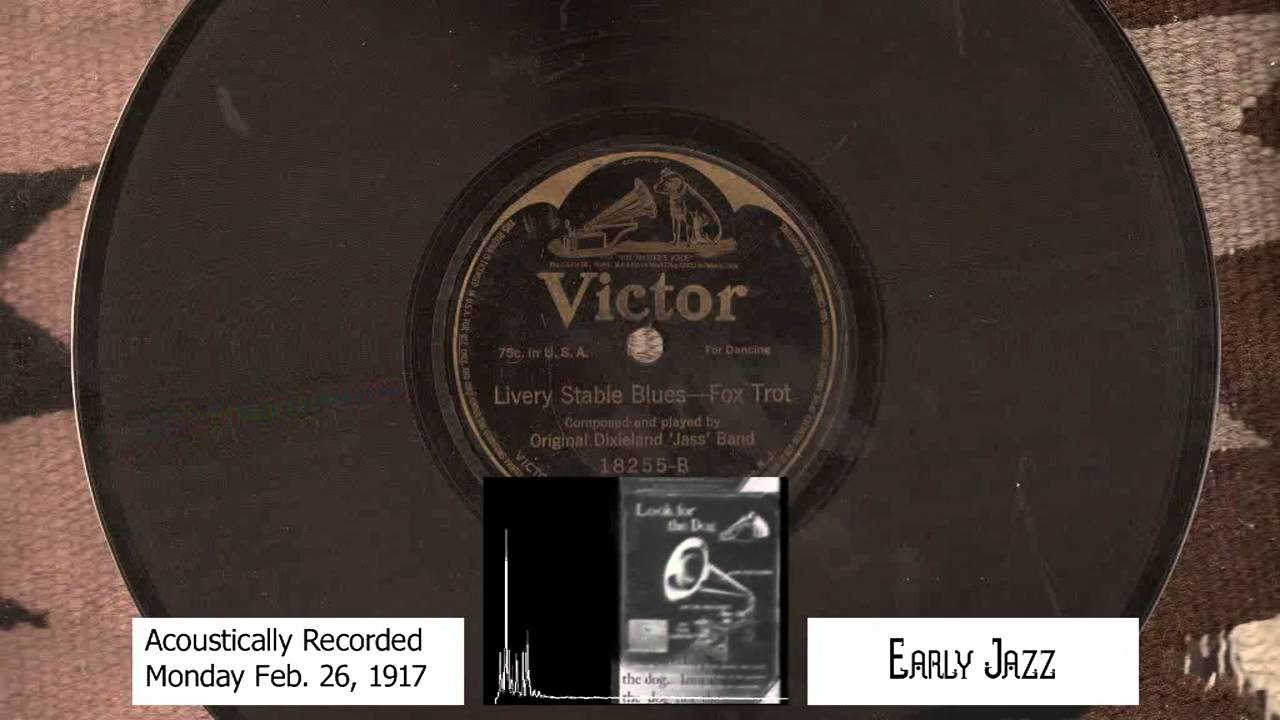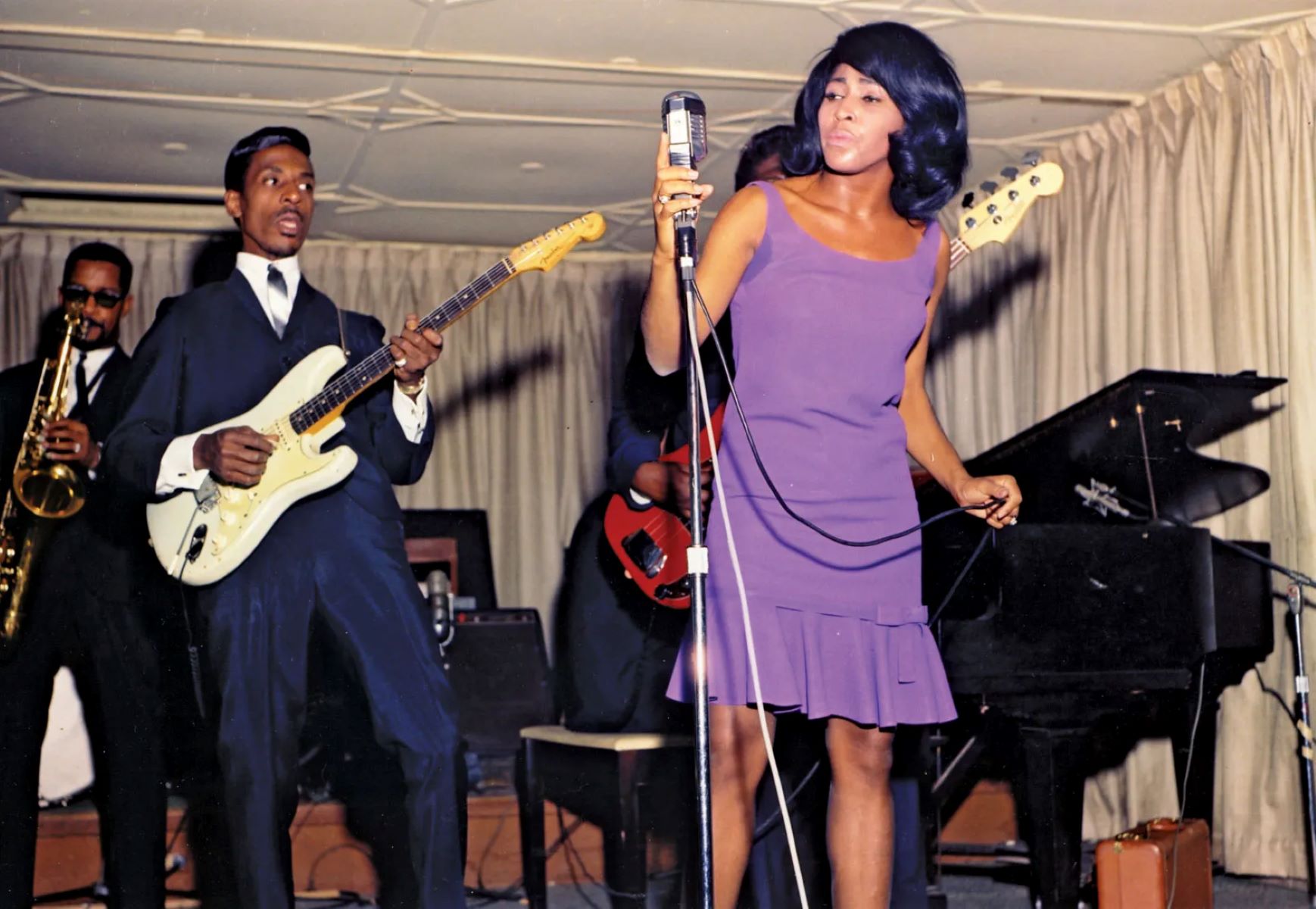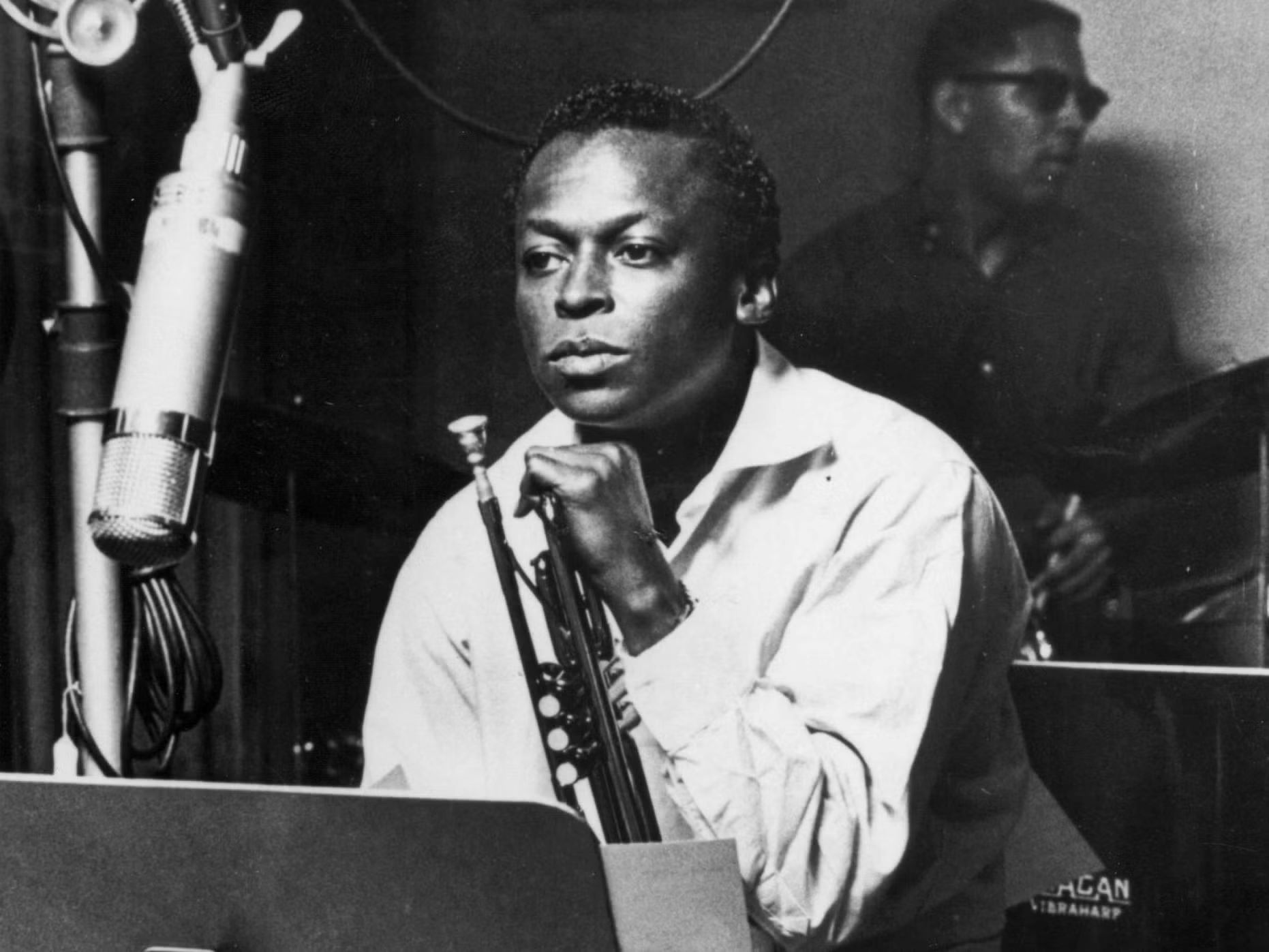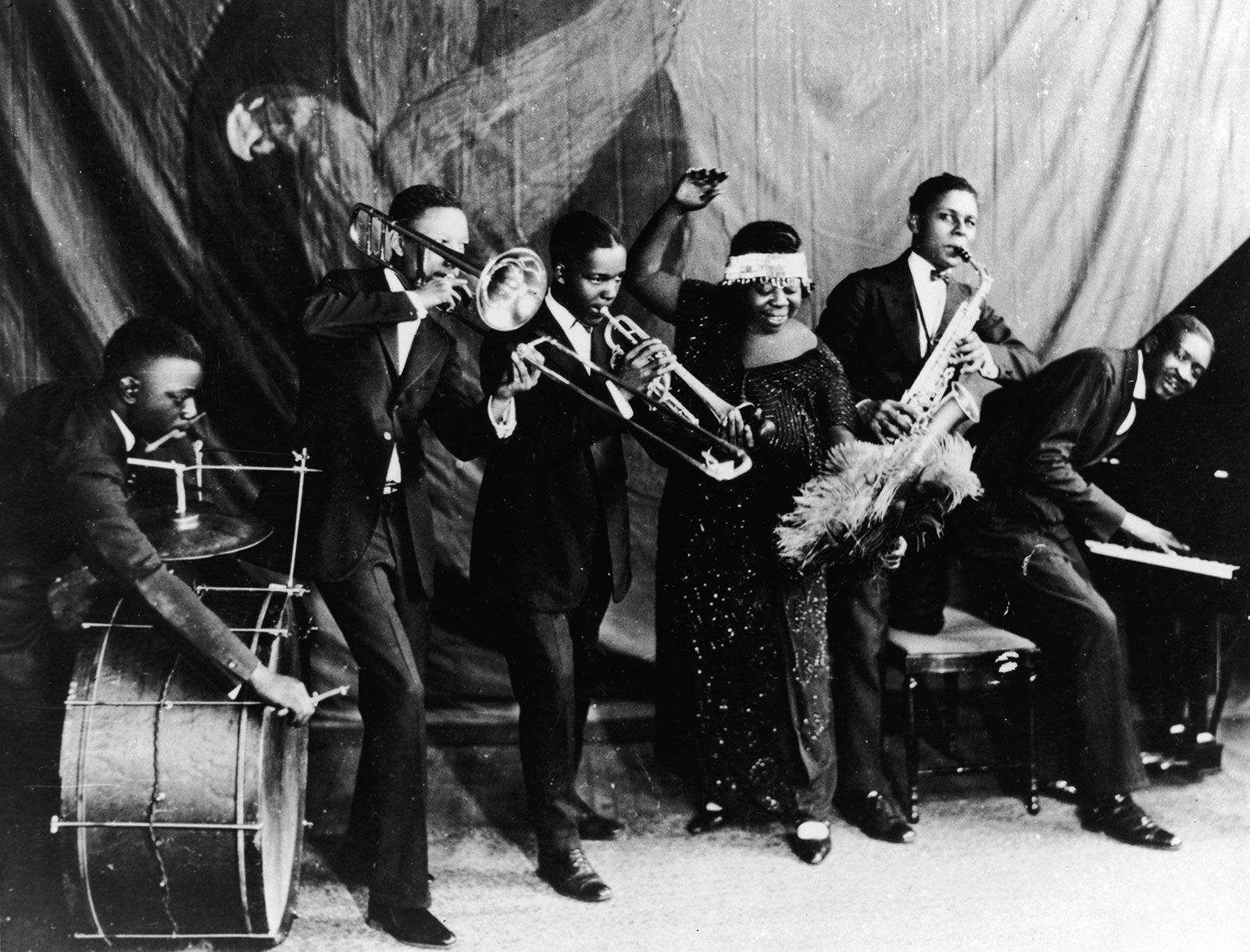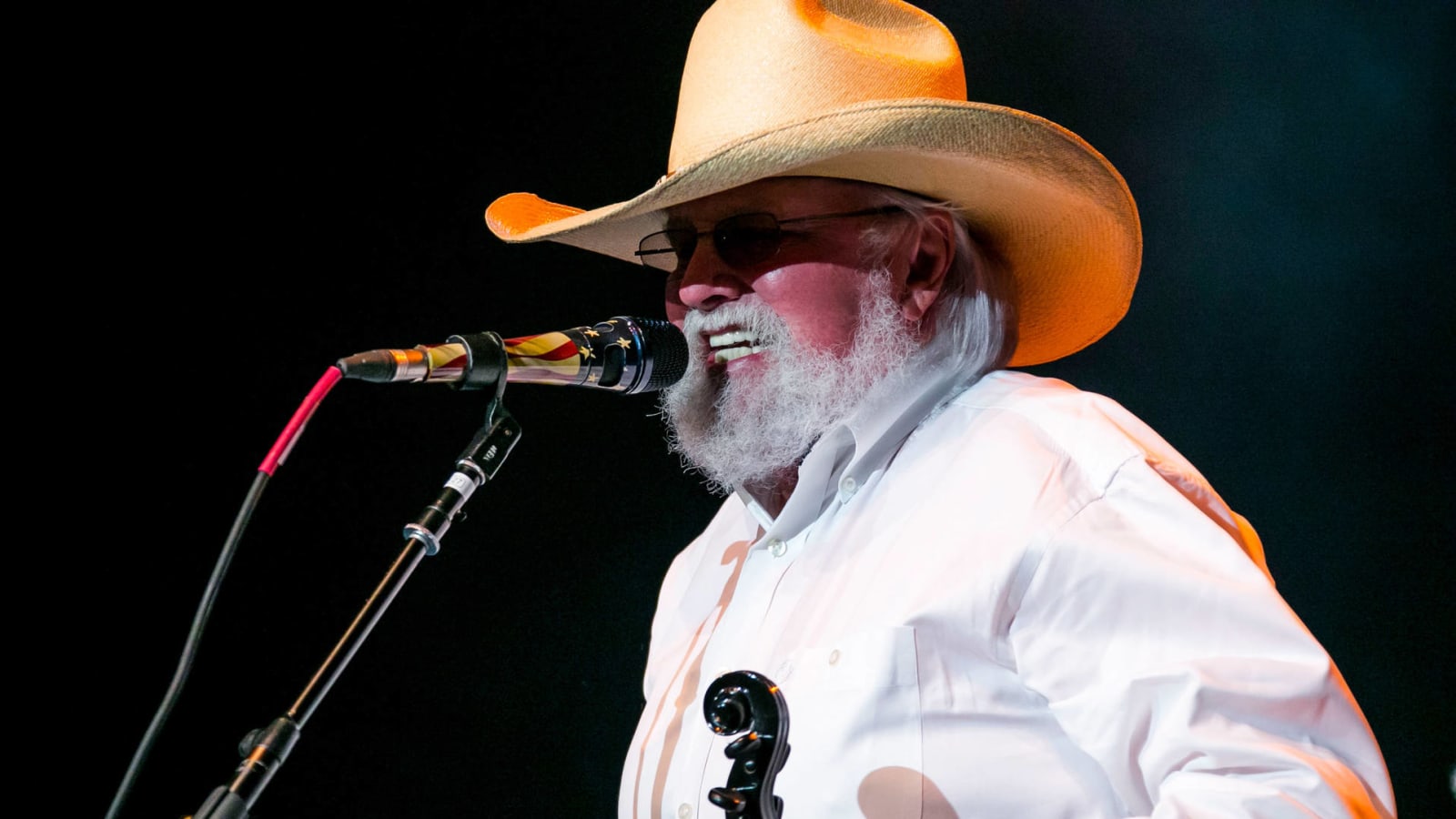

Jazz
Which Came First Jazz Or Blues
Modified: January 22, 2024
Explore the origins of Jazz and Blues, and unravel the captivating question of which genre came first. Discover the rich history and cultural roots behind the evolution of Jazz.
(Many of the links in this article redirect to a specific reviewed product. Your purchase of these products through affiliate links helps to generate commission for AudioLover.com, at no extra cost. Learn more)
Table of Contents
Introduction
Welcome to the intriguing world of jazz and blues! These two genres have captivated music lovers for decades, with their soulful melodies, improvised solos, and rich histories. But have you ever wondered which came first – jazz or blues? In this article, we will delve into the origins, musical characteristics, and the incredible connection between jazz and blues.
Jazz and blues are both deeply rooted in African American history and culture, and their development can be traced back to the late 19th and early 20th centuries. While they have distinct qualities that set them apart, there is an undeniable interplay between these genres that has significantly influenced the landscape of music.
Exploring the origins of jazz and blues allows us to understand the social and cultural conditions that shaped their evolution. From the pain and resilience of African American communities to the innovative spirit and creativity of talented musicians, the stories behind these genres are as fascinating as the music itself.
Throughout this article, we will uncover the essence of jazz and blues, examining their musical characteristics, influential artists, and their enduring impact on the music world. So, let’s embark on a journey through time and immerse ourselves in the enchanting world of jazz and blues.
Origins of Jazz
The roots of jazz can be traced back to the late 19th century in the vibrant city of New Orleans, Louisiana. A melting pot of cultures, New Orleans was a hub for African, European, and Caribbean influences, which played a significant role in shaping the early development of jazz.
One key factor in the birth of jazz was the cultural exchange that occurred in the city’s Congo Square. African slaves were allowed to gather and express their musical traditions, fusing their rhythmic patterns and vocal styles with elements of European brass band instruments.
As the popularity of brass bands grew, so did the influence of ragtime music, a syncopated style characterized by its lively and infectious rhythm. Pioneering musicians such as Jelly Roll Morton and Scott Joplin embraced the ragtime genre and incorporated it into their compositions, helping to lay the foundation for jazz.
Jazz truly took flight in the early 20th century with the emergence of innovative musicians known as “jazzmen” or “jazz cats.” These individuals, including Louis Armstrong, Duke Ellington, and Jelly Roll Morton, pushed the boundaries of traditional music by infusing it with improvisation, syncopation, and a distinctly African American flair.
The Great Migration of African Americans from the South to northern cities during the early 1900s further propelled the popularity of jazz. It found a new home in cities like Chicago and New York, where it evolved and diversified into different sub-genres such as swing, bebop, and cool jazz.
Jazz became more than just a genre; it represented a way of life and a means of self-expression for African Americans. It provided a voice for marginalized communities and showcased the immense talent and creativity inherent in their culture.
As jazz continued to evolve, it spread its influence across the globe, becoming an international phenomenon. Its rhythmic complexity, improvisation, and vibrant energy captured the hearts of music enthusiasts worldwide and paved the way for further experimentation and innovation.
Today, jazz remains an ever-evolving art form, continuously reinventing itself while staying true to its roots. It continues to inspire and challenge musicians and listeners, connecting people through the universal language of music.
Origins of Blues
The blues, like jazz, has deep roots in African American history and culture. It emerged in the late 19th century as an expression of the hardships, sorrows, and joys experienced by African Americans, particularly those in the rural areas of the Mississippi Delta.
The origins of the blues can be traced back to the African musical traditions brought by enslaved Africans to the United States. Through the years of slavery and the difficult post-emancipation era, these musical traditions evolved and transformed into what we now know as the blues.
The blues found its early form in the work songs, field hollers, and spirituals sung by African American laborers in the plantations. These songs served as a means of communication, a release of emotions, and a way to cope with the harsh realities of life.
As African Americans migrated from the rural South to urban areas, particularly the Mississippi Delta and cities like Memphis and Chicago, the blues began to take on new forms. The use of musical instruments such as the guitar, harmonica, and piano became more prevalent, and the music itself became more structured and developed.
Pioneering blues artists like Robert Johnson, B.B. King, and Ma Rainey emerged during this time and laid the foundation for the blues as a genre. Their raw and emotive performances, often accompanied by heartfelt lyrics, resonated with audiences and established the blues as a powerful form of expression.
The lyrical themes of the blues reflected the struggles and triumphs of African Americans, touching on topics such as poverty, oppression, love, and the search for freedom. The expressive and soulful nature of the blues allowed individuals to share their personal narratives and connect with others who shared similar experiences.
Over time, the blues influenced and intertwined with other musical genres, such as gospel, jazz, and rock and roll. The electrification of instruments in the 1940s and 1950s gave birth to electric blues, characterized by amplified guitars and a more energetic sound.
The blues continued to evolve and diversify through the decades, giving rise to various regional styles like Delta blues, Chicago blues, and Texas blues. Each style carries its own unique characteristics and showcases the distinct musical traditions of the areas where they originated.
To this day, the blues remains a powerful and influential genre, cherished by music enthusiasts around the world. Its ability to convey universal emotions and create a sense of connection among listeners is a testament to its enduring impact on popular music.
Musical Characteristics of Jazz
Jazz is a genre characterized by its improvisation, syncopation, and unique blend of musical elements. It encompasses a wide range of styles and sub-genres, but there are several key musical characteristics that define jazz as a whole.
One of the defining features of jazz is its emphasis on improvisation. Jazz musicians often take a familiar melody or chord progression and create their own unique variations on the spot. This element of spontaneity allows for individual expression and gives jazz its vibrant and ever-evolving nature.
Syncopation is another hallmark of jazz. It refers to the deliberate shifting of accents and rhythms against the regular pulse of the music. This rhythmic complexity gives jazz its distinctive swing and creates a sense of rhythmic tension and release.
Harmony plays a crucial role in jazz as well. Jazz musicians often use extended chords, such as seventh chords and altered chords, to create rich and colorful harmonies. This harmonic sophistication allows for complex chord progressions and creates a foundation for improvisation.
The use of complex and intricate melodies is also a characteristic of jazz. Jazz musicians often incorporate intricate melodic patterns and embellishments, showcasing their virtuosity and technical skills. These melodic lines, whether performed by the saxophone, trumpet, or piano, contribute to the expressive and captivating nature of jazz.
Rhythm is at the heart of jazz, and it is manifested in various ways. Jazz musicians employ different rhythmic techniques, such as polyrhythms and offbeat accents, to create a sense of groove and drive in the music. The interplay between the rhythm section, which includes instruments like drums and bass, and the melodic instruments is a crucial aspect of jazz performance.
The concept of “swing” is an integral part of jazz. Swing refers to the propulsive and rhythmic feel that is characteristic of the genre. It is achieved through a combination of syncopation, emphasis on the offbeat, and the subtle manipulation of timing. Swing gives jazz its infectious groove and invites listeners to tap their feet and move to the music.
Jazz also embraces a sense of freedom and experimentation. Musicians are encouraged to push the boundaries of traditional music, incorporating elements from other genres and exploring innovative harmonies and techniques. This artistic freedom allows for endless possibilities and ensures that jazz remains a dynamic and forward-thinking genre.
From the energetic and upbeat swing of big band jazz to the emotional and introspective tones of cool jazz, these musical characteristics define the essence of jazz and make it a truly unique and captivating form of music.
Musical Characteristics of Blues
The blues is a genre characterized by its expressive and soulful nature, rooted in the African American experience. It embodies a range of emotions, from deep sorrow to exuberant joy, and is marked by several distinctive musical characteristics that contribute to its timeless appeal.
One of the defining features of the blues is its characteristic twelve-bar chord progression. This progression consists of three chords, typically the I, IV, and V chords in a key, and forms the backbone of many blues songs. This simple yet powerful structure provides a framework for improvisation and serves as a foundation for the expressive melodies and lyrics of the blues.
The blues is known for its use of bent and sliding notes, also known as “blue notes.” These notes, often played on stringed instruments like the guitar or sung by vocalists, are intentionally slightly lower or higher in pitch, adding a distinct and melancholic sound to the music. The use of these blue notes creates the characteristic “bluesy” sound that is instantly recognizable.
Rhythm plays a vital role in the blues. The music often has a steady and repetitive beat, typically in 4/4 time, with a strong emphasis on the downbeat. This steady rhythm provides a solid foundation for the heartfelt vocals and instrumental solos that are synonymous with the blues.
The lyrics of the blues are central to its storytelling aspect. Blues lyrics often revolve around themes of heartbreak, love, loss, and the struggles of everyday life. They rely on vivid imagery and metaphors to convey complex emotions, painting a vivid picture in the minds of the listeners. The blues serve as a medium for personal expression, allowing individuals to share their experiences and connect with others who can relate.
The blues often incorporates call-and-response patterns, where a lead vocalist or instrumentalist will present a phrase or melodic line, and it is followed by a response from another vocalist or instrument. This call-and-response structure adds a dynamic and interactive element to the music, allowing for interplay between musicians and creating a sense of conversation within the song.
The blues heavily relies on improvisation and individual expression. Musicians have the freedom to infuse their own style and interpretation into their performances, whether through vocal embellishments, instrumental solos, or variations on the established chord progression. This improvisatory element allows for spontaneity and uniqueness in each performance, making every blues rendition a personal and soul-stirring experience.
The blues is ultimately a genre of emotion and authenticity. Its musical characteristics, from the distinctive chord progression to the bent blue notes and heartfelt lyrics, create a deeply emotional and evocative experience for both musicians and listeners. It is a testament to the resilience, creativity, and cultural significance of the African American community and continues to captivate audiences worldwide.
Influence and Connection between Jazz and Blues
Jazz and blues are intimately connected, with each genre exerting a profound influence on the other throughout their shared histories. Although they have distinct characteristics, the boundaries between jazz and blues are often fluid, and musicians frequently draw inspiration from both genres to create innovative and captivating music.
One of the key connections between jazz and blues lies in their shared roots in African American musical traditions. Both genres emerged from the African diaspora, incorporating elements of African rhythms, call-and-response patterns, and expressive vocal styles. They reflect the struggles, joys, and resilience of African Americans, serving as powerful forms of cultural expression.
The blues provided a fertile breeding ground for the development of jazz. Early jazz musicians, such as Louis Armstrong, Duke Ellington, and Jelly Roll Morton, drew inspiration from the blues’ expressive melodies and emotional intensity, incorporating elements of the blues into their compositions and improvisations. The blues served as a stepping stone for the evolution of jazz, shaping its harmonic and melodic language.
As jazz progressed and diversified, it in turn influenced the development of the blues. The swing era of the 1930s and 1940s, with its big bands and complex arrangements, brought jazz elements into the blues. Artists like Count Basie and Duke Ellington emphasized the swing rhythm in their blues performances, adding sophistication and intricacy to the genre.
The bebop movement of the 1940s saw jazz musicians like Charlie Parker and Dizzy Gillespie infusing blues elements into their improvisational style. Bebop brought a higher level of complexity and technicality to jazz, and many of its practitioners drew inspiration from the blues’ emotional depth and rawness.
The blues and jazz continued to influence each other as the decades progressed. Artists like B.B. King and T-Bone Walker incorporated jazz-inspired chord voicings and melodic improvisation into their blues guitar playing. Similarly, jazz musicians such as Wes Montgomery and George Benson incorporated bluesy phrasing and soulful expression into their improvisations.
Furthermore, the blues and jazz are often performed alongside each other in live settings and jam sessions. Musicians from both genres frequently collaborate, exchanging ideas and techniques. This cross-pollination creates a rich musical tapestry, blurring the lines between jazz and blues and resulting in performances that showcase the best of both worlds.
The influence and connection between jazz and blues continue to manifest in contemporary music as well. Musicians and bands like Robert Cray, Norah Jones, and Gary Clark Jr. effortlessly blend elements of jazz and blues in their performances, creating a seamless fusion of styles.
Ultimately, jazz and blues are two interconnected genres that have shaped the musical landscape and influenced countless musicians across the globe. Their shared heritage, distinct characteristics, and ongoing dialogue highlight the power of music to transcend boundaries and create a language that resonates with the human experience.
Conclusion
As we conclude our exploration of the fascinating world of jazz and blues, we have delved into the origins, musical characteristics, and the profound connection between these two genres. Jazz and blues are embodiments of the African American experience, cultural expressions that have captivated audiences around the world for decades.
Jazz and blues share a common foundation, drawing from African musical traditions and reflecting the struggles and triumphs of African Americans throughout history. They have influenced and inspired each other, blurring the lines between genres and creating a rich tapestry of musical expression.
The origins of jazz can be traced back to the vibrant city of New Orleans, where cultural exchange and innovation gave birth to this dynamic and improvisational genre. From its humble beginnings, jazz evolved into numerous sub-genres, showcasing the creativity and virtuosity of musicians who pushed the boundaries of traditional music.
Blues, on the other hand, emerged from the deep sorrows and joys of African Americans, using heartfelt lyrics, expressive melodies, and distinct musical elements such as the blue notes to convey a range of emotions. The blues provided a foundation for jazz, influencing its development and serving as a constant source of inspiration.
The connection between jazz and blues is further evident in the shared musical characteristics they possess. Both genres emphasize improvisation, syncopation, and rhythmic complexity. The blues’ raw emotion and storytelling merge with jazz’s sophistication and experimentation, creating a remarkable fusion of styles.
Jazz and blues continue to influence and inspire musicians across generations. Their impact extends beyond the realm of music, serving as cultural touchstones that reflect the experiences, struggles, and triumphs of African American communities. They are powerful forms of self-expression and connect people across different backgrounds and cultures.
Whether it’s the infectious swing of Duke Ellington’s big band jazz or the soulful cries of B.B. King’s blues guitar, these genres remain vital and relevant in the contemporary music landscape. From the smoky jazz clubs to the gritty backroads, jazz and blues tell stories and touch souls.
So, the next time you find yourself swaying to the smooth melodies of jazz or feeling the deep resonance of the blues, take a moment to appreciate the rich history and remarkable connection between these two influential genres. Explore their origins, immerse yourself in their musical characteristics, and let the power of jazz and blues transport you on a timeless journey through the depths of human emotion.

